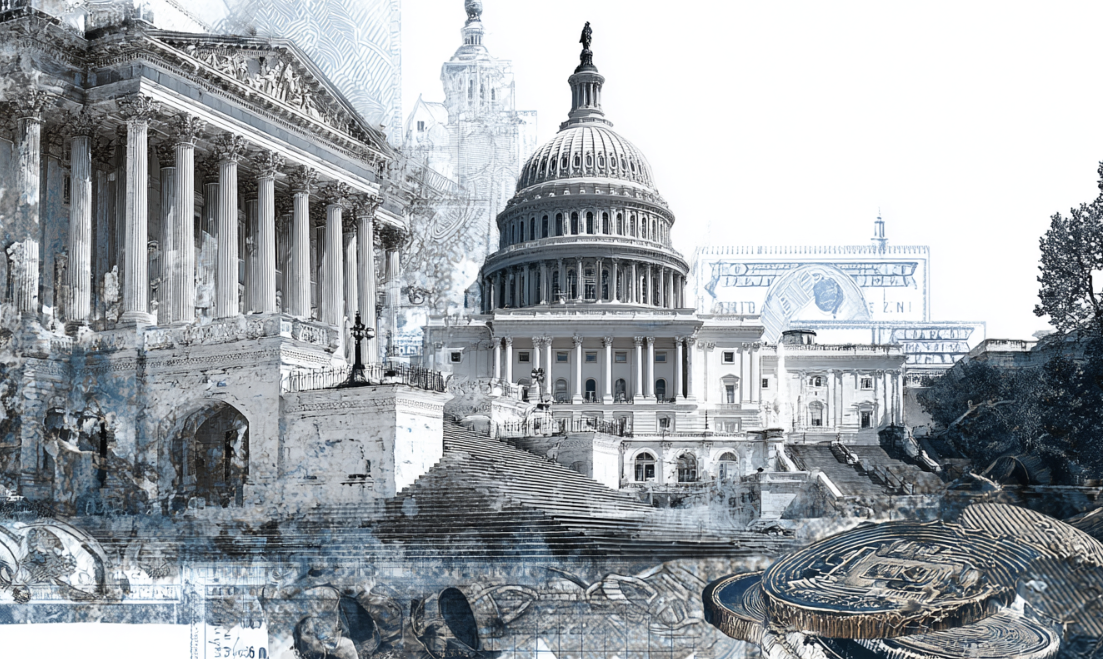Goldman Sachs & BNY Mellon Disrupt Finance: Launch First US Tokenized Money Market Fund
Wall Street giants just dragged money markets onto the blockchain—whether regulators were ready or not.
Goldman Sachs and BNY Mellon flipped the switch on the first US-regulated tokenized money market fund, letting investors trade shares 24/7 as digital tokens. The move effectively turns Treasury bills into crypto assets—minus the volatility.
Why it matters: This isn't just plumbing. Tokenization could unlock $16 trillion in dormant institutional capital by making private markets trade like public ones. Or so the sales pitch goes.
The fine print: Early trading volumes remain anemic. Turns out, banks still haven't solved the 'if you build it, will they come?' problem—even with blockchain glitter sprinkled on top.
Bottom line: When Goldman starts playing with crypto rails, pay attention. Just don't expect them to admit this is about catching up to DeFi's 5-year head start.

Goldman Sachs and BNY have launched the first tokenized money market fund solution in the United States, bringing blockchain technology to one of the most liquid corners of traditional finance as Wall Street accelerates its digital transformation, according to an announcement on Wednesday.
The collaboration enables institutional investors to subscribe to money market fund shares through BNY's LiquidityDirect platform while creating mirror tokens on Goldman's GS DAP blockchain network. The initiative aims to unlock new collateral capabilities and improve transferability for the $6 trillion US money market fund industry.
Five major asset managers – BlackRock, BNY Investments Dreyfus, Federated Hermes, Fidelity Investments, and Goldman Sachs Asset Management – are participating in the initial launch, representing significant industry backing for tokenized fund structures.
The launch comes as traditional financial institutions face increasing pressure to digitize operations amid growing competition from cryptocurrency-native firms. Money market funds represent an ideal starting point for tokenization due to their stable value, high liquidity, and critical role in institutional cash management.
Goldman's GS DAP platform, built using technology from Digital Asset, marks its first deployment in the US market. The bank frames the initiative as part of broader objectives to improve collateral mobility in capital markets by enabling on-chain asset delivery with greater precision and efficiency.
Collateral Revolution in Capital Markets
The tokenization approach addresses a fundamental inefficiency in institutional finance: the cumbersome process of moving money market fund shares as collateral. Traditional settlement can take days and requires extensive documentation, while tokenized versions promise near-instantaneous transfers with programmable compliance features.
"Using tokens representing the value of shares of Money Market Funds on GS DAP WOULD enable us to unlock their utility as a form of collateral and open up more seamless transferability in the future," said Mathew McDermott, global head of digital assets at Goldman Sachs.
The solution maintains existing regulatory frameworks by keeping official fund records and settlements within approved guidelines while creating blockchain representations that can MOVE more efficiently between counterparties. This hybrid approach allows institutions to benefit from tokenization without abandoning established compliance structures.
Technology Bridge Strategy
BNY positions itself as a critical bridge between traditional finance and emerging blockchain technology through the partnership. The bank's LiquidityDirect platform, already used by institutional investors for money market fund access, now integrates with Goldman's blockchain infrastructure to create what executives call "mirrored tokenization."
"As the financial system transitions toward a more digital, real-time architecture, BNY is committed to enabling scalable and secure solutions that shape the future of finance," said Laide Majiyagbe, global head of liquidity, financing and collateral at BNY. "Mirrored tokenization of MMF shares is a first step in this transition."
The approach allows BNY to maintain its role as fund administrator while Goldman provides the blockchain technology that enables enhanced functionality. This division of responsibilities leverages each firm's Core competencies while minimizing regulatory complexity.
The participation of major asset managers signals industry recognition that tokenization represents an evolutionary rather than disruptive change to existing fund structures. By maintaining traditional fund mechanics while adding blockchain functionality, the solution addresses institutional concerns about regulatory compliance and operational risk.
Future expansion plans suggest the initiative could extend globally as regulatory frameworks evolve, potentially creating standardized tokenized fund structures across multiple jurisdictions. The success of this pilot could accelerate similar tokenization efforts across other traditional financial products.
Stay ahead of the curve. Join the Blockhead community on Telegram @blockheadco
